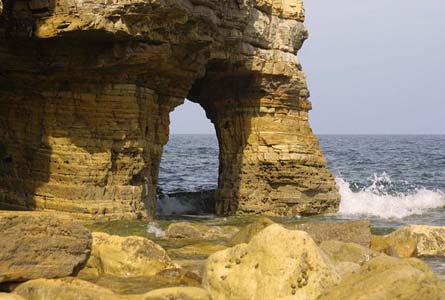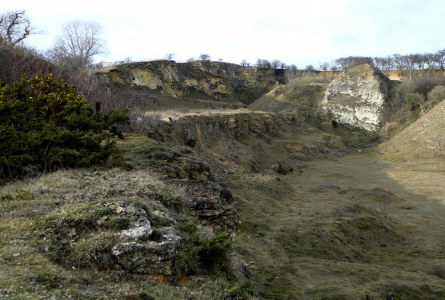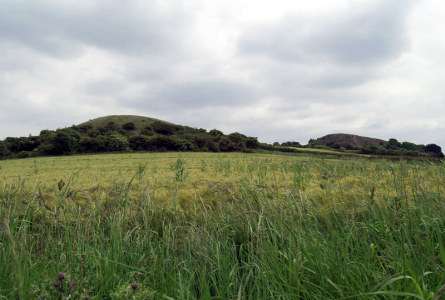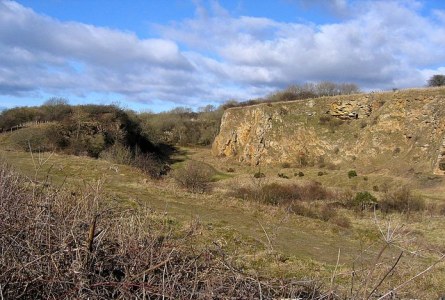The Magnesian Limestone
Arch at Marsden Rock

The most distinctive rock of the area is the Magnesian Limestone, a complex succession of limestones of differing compositions and textures which formed beneath the waters of the Zechstien sea, about 240 million years ago.
This limestone contains high concentrations of the Magnesian rich mineral – dolomite, and it’s the abundance of this dolomite that accounts for the areas characteristic Magnesian Limestone flora and fauna.
Although fossils are relatively scarce, a feature of the Durham Magnesian Limestone is the presence of a well-preserved barrier reef formed from skeletons of ‘moss like animals’ known as bryozoans together with a wealth of shells. Today parts of the reef structure form prominent knolls such as the Humbledon and Tunstall Hills at Sunderland, Beacon Hill in Easington and Blackhall Rocks on the coast.
Exploitation of the Magnesian Limestone and other rocks of the area have left a visible historic imprint on the landscape in the form of quarries, small and large, abandoned and still working including Crime Rigg and Old Quarrington which are prominent features in the escarpment landscape.
Many of the disused quarries have re-colonized with species rich Magnesian Limestone grassland and contain a significant proportion of the conservation interest within Limestone Landscapes. A number of these sites have been designated as Sites of Special Scientific Interest (SSSI), including Bishop Middleham Quarry.









